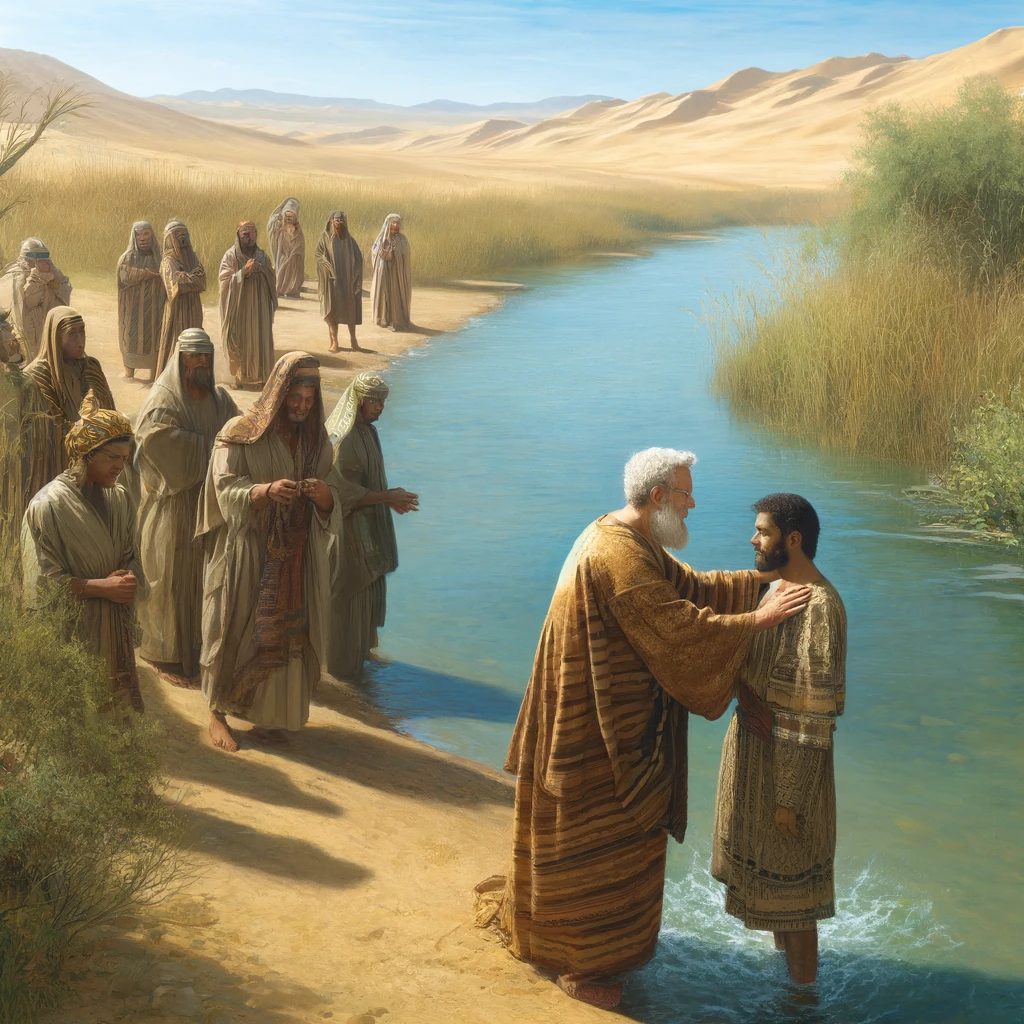
So you read the whole Old Testament. You read it several times. Having immersed yourself in the literature that your Bible, by its basic structure, seems to promise as the precursor to the rest, you finally turn to the New Testament. This is how it always goes isn’t it? Stop laughing, I’m making a point.
In the New Testament, you encounter a number of things you’ve never seen before. There are Romans, Pharisees, Sadducees, and Zealots. There is also this thing called Baptism.
Old Testament… no baptism.
New Testament… lots of baptism.
Where did it come from? What does it mean? How should modern Christians respond to it?
To even begin to answer these questions, you have to recognize a handful of things about the world of the Old and New Testaments. There are a number of things that took place there that modern readers know little about.
First, modern readers rarely understand covenant… even when they think they do. We tend to think of covenant in terms of Abraham, Moses, David and the like, but actually know little about covenant itself because we develop our thinking about covenant primarily from Scripture, and Scripture records, but does not explain, covenant. Abraham, Moses and David make covenants with God because covenant was a big deal already in their world. Covenant has a long history and a complexity in practice and principles that Scripture never specifically teaches us.
Once you learn more about it, you will discover that baptism is one of many ways that Israel develops of making a covenant, of ratifying a covenant. A covenant ratification is a ritual way of signing a contract that will be enforced by the Divine. When you see people eating together, clasping hands, performing circumcisions, exchanging clothes, grasping garment hems, chopping up animals, or making various kinds of public declarations, you are watching similar ratification acts of covenant making. There are covenants and covenant language on almost every page of Scripture.
There are lots of things to know about covenant and most of them will apply to baptism.
Second, baptism developed in Israel as a way of marking the conversion of already circumcised Jewish men into more exclusive movements and their leaders within Judaism. It also provided a means of ratifying the conversion of gentile women independent of their husbands when their presence in Israel, and Israel’s presence among them became more common. Men who convert to Judaism are circumcised. They did not circumcise women, however, and could not re-circumcise a man in order to allow him to ratify entrance into what the group deemed as “The New Covenant.” (The practice is more complicated than what I here describe, but this will suffice for now.)
Third, ratification acts almost always involved symbolic death, and/or the symbolic ingestion of death curses.[1] The one entering into a covenant stood before his god, and often the god of the one with whom he was making the covenant (One reason to never covenant with pagan) and with either words or actions invited those gods to destroy the covenant ratifier if he should prove unfaithful to the covenant in question.
Fourth, water was a powerful death symbol in the ancient world. It is not an accident that the New Testament will speak of baptism in association with Moses passing through the Red Sea (1 Corinthians 10:1ff), Noah passing through the flood (1 Peter 3:20-21), and of both baptism and Jonah’s descent into the abyss with Jesus’ death and resurrection. (Matthew 12:40; Romans 6:4)
Fifth, as a death symbol, baptism also becomes a symbolic ordeal… a successful passage through death by divine protection. Ancient law courts (Not Israel) would commonly, when there was some doubt in the testimony against an accused person, execute people in such a way that the gods could easily intervene to save them. (If you imagined Batman caught in any given death trap by a villain, you wouldn’t be too far off.) Throwing them into water all tied up was a favorite, but we have record of fire and lions being used too. The application of the principle of ordeal found life outside the court setting as well, however. To escape certain death was a sign of divine acceptance, election, or declared innocence. Think, Daniel in the Lion’s den, Shadrach and his companions in the fire, The psalmist in “the waters” (actually war) in Psalm 18:3ff, and, again, Israel through the Red Sea, Noah through the flood, and Jonah through the depths of the sea.
Finally, sixth, while baptism became common among Jewish sects, like the Essenes (Think Dead Sea Scrolls) and even John the Baptist, Jesus used it to ratify his own followers, and the New Testament church continued the practice, investing the rite with even more specific meaning after Jesus’ successful passage through actual death in his resurrection in incorruptible glory.
When we open the pages of the Gospel of Mark, we find baptism terms being frequently repeated and qualified. With a renewed sense of the importance of the imagery, what might we make out of the author’s intentions in its several uses from Mark 1:2-13?
[1] Some ratification acts embodied ideas of “oneness” in addition to, or instead of, death images.
[2] Media pic is from sxc.hu




